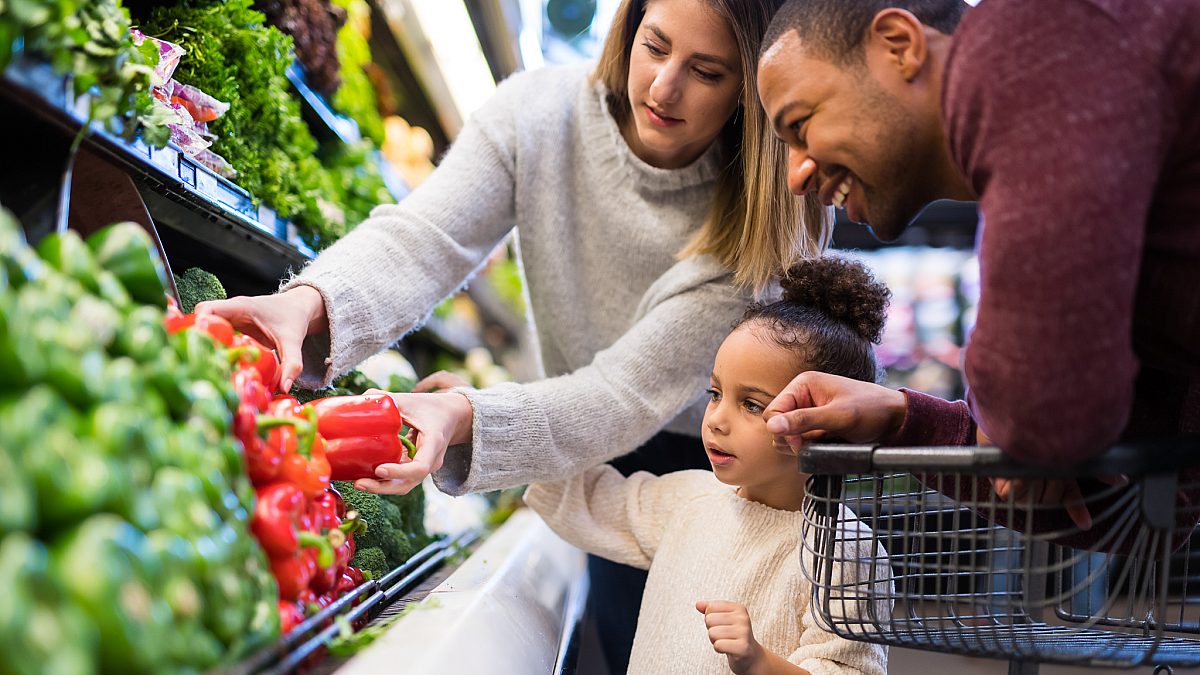Grocery Shopping Trends Will Have Big Impacts on Agriculture
Guest Author
Special Contributor to FB.org

photo credit: Getty Images
Guest Author
Special Contributor to FB.org
By Robert Giblin
Grocery shopping is changing dramatically, to meet the needs of consumers whose demographics, lifestyles, desires and consumption trends are radically different than those of the 20th century “golden age” of supermarkets.
Busy working parents are too pressed for time to shop or cook from scratch. Households are smaller. Many urban consumers lack access to both stores and transportation to carry groceries. Some just hate grocery shopping, especially waiting in checkout lines. Increasingly, consumers want to know more about their food and how it is produced.
The focus of grocery shopping is shifting from products to services, solutions and entertainment.
An increasing number of supermarkets, dubbed “grocerants” — grocery restaurants — are stocking shelves with prepared foods and offering up-scale in-store dining, including entertainment.
Meal kits are growing tremendously. The meal kit business is now worth about $5 billion, and could grow to more than $35 billion in the next five or six years.
Online meal kit services, such as Blue Apron, Plated and Hello Fresh, send food, additional ingredients and recipes tailored to customers’ lifestyles, the number of servings needed, the number of days or nights customers want to cook, and the amount of time they want to spend cooking. While only 3 percent to 7 percent of all consumers have tried meal delivery kits, more than 60 percent of millennials have. Blue Apron, the largest, now sends out about eight million meals per month.
New kit companies are specializing in regional cuisine or special diets, and linking to cooking and other social media sites. Now, major branded food companies and retail grocers are entering into the meal kit foray, both in stores and online.
Major online retailer Amazon is not only increasing its food sales, but also experimenting with a brick-and-mortar grocery store concept that uses technology to remove one of the hassles of grocery shopping – checkout lines. Consumers use a mobile application to check in and out of the store. Sensors track what consumers take. When they leave, the app adds up the bill and charges their account. Amazon plans to open its first store in 2017.
In Italy, the “supermarket of the future” recently opened its doors. Co-op Italia organizes products on interactive tables and shelves. When a consumer moves to touch a product, “augmented labels” on suspended screens show nutritional information, the presence of allergens and waste disposal instructions. A separate wall of 50 monitors forms a huge screen that allows consumers to get more information and cooking instructions.
Most grocery chains are implementing “augmented transparency” technologies to provide information about how food is produced – how much water and land are used, carbon footprints, health, food safety, environmental impacts, ingredients produced using biotechnology, animal welfare, labor practices, and food waste.
By the end of 2017, more than 30,000 products will carry the SmartLabel, giving consumers easy access to information through mobile or hand-held devices. More than 30 major food companies have committed to taking part in the transparency initiative. In five years, SmartLabels will be on about 80 percent of food, beverages, pet food and other products typically sold in grocery stores. Retailers and food companies believe that the information provided can help build trust with consumers.
For several years, those involved in marketing products based on promoting their production practices – organic, grass-fed, produced without hormones or antibiotics, non-GMO and others – have been highly successful in highlighting their products, which appeal to specialty markets. SmartLabels and other augmented transparency labels and technologies increasingly will open windows into all of agriculture, allowing more opportunity for consumer education and engagement. More than ever, farmers and ranchers will need to build relationships with food companies and retailers, and equip them with the information consumers need to make informed purchase decisions.
Robert Giblin
Freelance writer
Robert Giblin writes, speaks and consults about agricultural and food industry issues, policies and trends.
Top Issues
VIEW ALL